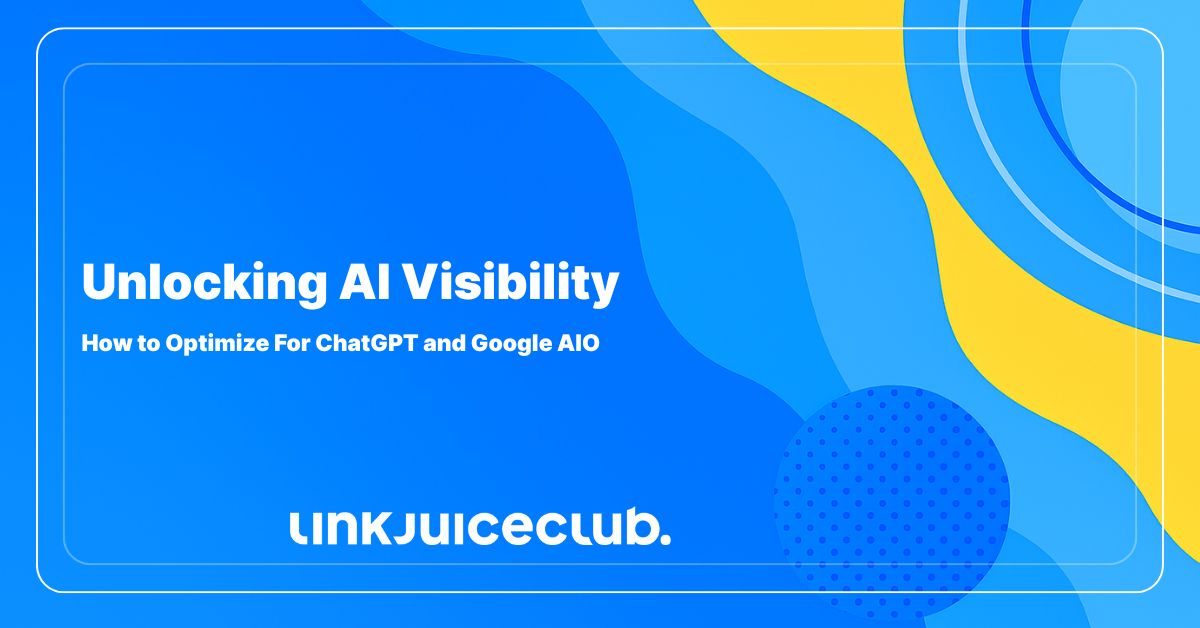
Unlocking AI Visibility: How to Optimize For ChatGPT and Google AIO
AI search is evolving — and fast. New data from BrightEdge reveals that ChatGPT and Google AI Overviews suggest different brands nearly 62% of the time. That’s not just a small gap — it’s a split in how each system sees authority, trust, and relevance.
What does that mean for you? Simple: you can’t treat all AI platforms the same. ChatGPT and Google aren’t pulling from the same playbook. If you want to be seen, mentioned, and recommended — you’ve got to tailor your strategy for both.
Same Questions, Wildly Different Answers
Turns out, AI platforms don’t always see eye to eye. Ask the same question on ChatGPT, Google AI Overviews, and Google AI Mode — and you’ll likely get three different brand shout-outs.

Here’s what the BrightEdge study uncovered:
- 🧠 ChatGPT leans on trust — even without search data, it often recommends brands baked into its training.
- 📰 Google AI Overviews goes wide — it drops 2.5x more brand mentions than ChatGPT in each response.
- 🎯 Google AI Mode plays it cool — it’s the most selective, with fewer brand nods across the board.
Each AI system favors a different flavor of relevance — trust, breadth, or precision. If you want visibility, you’ve got to speak each platform’s language.
Next up: why do these patterns show up in the first place? Let’s decode the logic behind the algorithms.
Why Each AI Platform Plays a Different Game
This isn’t just random chaos behind the scenes. BrightEdge argues that each platform follows its own logic — and they’re not wrong. But here’s the twist: it’s not just about “authority” in the old-school SEO sense.
Here’s what’s really going on under the hood:
The Legacy Advantage (ChatGPT)
ChatGPT draws from its vast training data — not real-time search results. That gives legacy brands with a strong historical presence a natural edge. They’re already baked into its worldview.
If your name’s been part of the conversation for years, you’re more likely to show up. If not, now’s the time to start building that narrative. Think less about ranking today, and more about embedding your brand in the broader digital memory.
The Mention Machine (Google AIO)
Google AI Overviews doesn’t hold back on brand names — you’ve got more than six potential spots per query to earn a mention. And the best part? The path to earning those mentions is visible.
Some brands are already deconstructing these patterns, figuring out exactly what gets cited and why. They’re not just optimizing pages — they’re optimizing their presence across the web, targeting the right queries, with the right supporting signals.
And here’s where most competitors slip: they’re still stuck chasing blue links, while AI is moving the goalposts entirely.
The Curated Club (Google AI Mode)
If ChatGPT rewards legacy and Google AIO rewards visibility, Google AI Mode rewards precision. It mentions fewer brands, but when it does — those mentions carry weight.
This is where consistent, high-quality brand reinforcement comes into play. It’s not just about being known — it’s about being respected across multiple sources, all pointing to the same signal: credibility.
Each platform is playing its own game. The sooner you learn the rules, the faster you can win at all three.
It’s Not Authority — It’s Familiarity
BrightEdge talks about “authority signals” inside ChatGPT’s language model. But let’s pump the brakes for a second — that’s not quite how it works.
When ChatGPT isn’t pulling from live data (like with citations), it’s not “ranking” brands. It’s simply recalling what it knows based on training. And what it knows? That’s shaped by how often, how prominently, and how clearly a brand shows up in the content it was trained on.
Here’s what really influences brand mentions in LLM output:
- How often your brand name appears in training material.
- How visible it is in those mentions — think headlines, not fine print.
- How connected it is to certain topics — the stronger the link, the more likely it shows up.
So no, it’s not traditional SEO authority. It’s pattern recognition. ChatGPT echoes what it’s seen the most — and what it’s seen in the right context.
Spotting the Signals: Where Brand Mentions Really Happen
Patterns are starting to form — and if you’re paying attention, they’re more than just noise. The BrightEdge data shows that certain types of searches are far more likely to trigger brand mentions across all three AI platforms.
Here’s what stands out:
- Searches with clear buying intent (think “where to buy,” “top deals,” “best price”) spark brand mentions in nearly two-thirds of cases.
- Industries like e-commerce, finance, automotive, and travel see higher brand visibility — likely because AI can clearly understand and respond to strong commercial signals in those spaces.
Even better? When users search for comparisons — like “best hybrid SUV” or “top-rated hotels in Paris” — nearly 43% of those queries pull in brand mentions. That shows the models aren’t just matching keywords… they’re interpreting intent.
So if you’re in an industry where people are always comparing, evaluating, or planning big purchases — this is your chance to be seen.
SEO Isn’t Dead — It’s the Engine Behind AI Visibility
Let’s make one thing clear: traditional SEO is still the backbone of AI search success. While the tech is evolving, the rules of visibility still begin with classic SEO fundamentals — and yes, that includes keyword targeting, structured content, and authority-building.
BrightEdge’s findings reinforce this:
- Google AI Overviews responds directly to optimized content — SEO still drives placement here.
- AI Mode and ChatGPT pull from broader signals, but SEO-strong content feeds the very systems that shape their outputs.
Here’s the real strategy: Create content that ranks well, earns mentions, and reinforces your brand in the right contexts. That’s how you get into the AI ecosystem — not just once, but for the long haul.
And for ChatGPT? Even when it’s not pulling live data, it can still echo your brand if it’s been exposed to strong, topic-aligned content over time. That’s the kind of material that gets baked into its training data — and surfaces later as brand recognition.
Bottom line: If you want your brand to show up in AI results, start by showing up everywhere else first.





